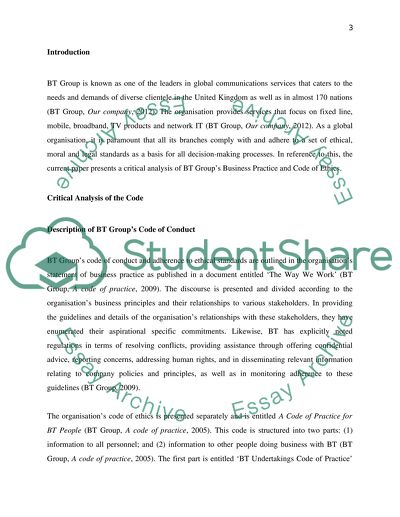Cite this document
(“BT group: an analysis of the organisation`s code of conduct Essay”, n.d.)
BT group: an analysis of the organisation`s code of conduct Essay. Retrieved from https://studentshare.org/marketing/1403487-bt-group
BT group: an analysis of the organisation`s code of conduct Essay. Retrieved from https://studentshare.org/marketing/1403487-bt-group
(BT Group: An Analysis of the organisation`s Code of Conduct Essay)
BT Group: An Analysis of the organisation`s Code of Conduct Essay. https://studentshare.org/marketing/1403487-bt-group.
BT Group: An Analysis of the organisation`s Code of Conduct Essay. https://studentshare.org/marketing/1403487-bt-group.
“BT Group: An Analysis of the organisation`s Code of Conduct Essay”, n.d. https://studentshare.org/marketing/1403487-bt-group.


